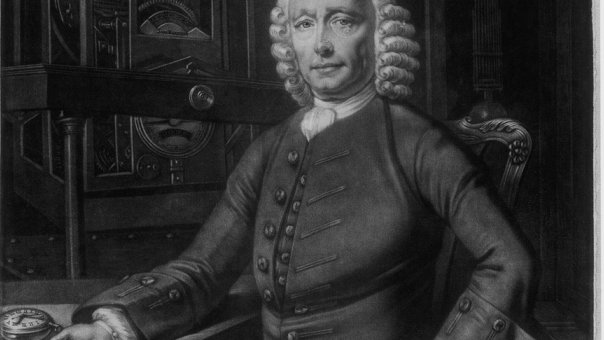Gather Your Allies, Engage in Unorthodox Thinking – 300 Year Old Lessons in Innovation
24 Mar 2015
Written by Helen Goulden
Today marks the 322nd birthday of British inventor, John Harrison. For centuries now Harrison’s story has captured the public’s imagination: the working class joiner and watchmaker who won against the Goliath might of the astrological community.
His story began when, in 1714, the British government threw down the gauntlet to solve one of the great scientific challenges of that century – how to pinpoint a ship’s location at sea by knowing its longitude. The problem with not accurately knowing longitude was that ships got lost at sea, causing frequent shipwrecks and disrupting global trade. Harrison’s extraordinary mechanical talent and determination, culminated in the marine chronometer, H4 – the first sea-faring clock that allowed people to pinpoint their exact position at sea. The solution not only led to safer sea travel, but opened up global trade.
Commemorating the 300th anniversary of the Longitude Act and one of Britain’s most prominent innovators, last year the Longitude Prize was reinstated to tackle one of the greatest challenges of our era – resistance to antibiotics, as voted for by the British public, through a partnership with the BBC. The Prize is now open to competitors to come forward with new tools to transform the way we test the need for and prescribe antibiotics. Harrison was an innovator in his own time. Many thinking of entering today’s Longitude Prize could look to him for inspiration.
Richard Dunn, history of science curator at the National Maritime Museum, has explained to us that Harrison’s traits of unorthodox thinking and gathering allies aided his success. Simon Yeo of the John Harrison Foundation has highlighted Harrison’s great insight and dogged perseverance in getting “almost to the truth” with his timekeepers are qualities we must celebrate, revere and take heed. At Nesta we’ve run a number of challenge prizes, like the Longitude Prize, and understand the qualities that make innovators successful. Many of the traits we see in people Nesta supports have many of the traits which Harrison displayed.

What’s the Longitude Prize?
Like Harrison, those entering the Longitude Prize need to challenge normal assumptions to create a truly transformative solution that people will use.
Today’s £10 million Prize is looking for point-of-care diagnostic that will identify when antibiotics are needed and, if they are, which ones to use. A solution that meets the prize criteria will not only help conserve antibiotics for future generations but also revolutionise the delivery of global healthcare.
Doctors currently send samples to labs and wait days for the results. There are also a range of diagnostics being trial all over the world so to be good enough to win we really want to see creditable ideas that step away from what already exists. The solution needs to be a diagnostic tool but how does your idea differ from what’s already available? How have you made your tool responsive to new environments or have you developed a nifty way to make it super quick at reading results?
No idea comes fully formed, and inventors that are open to amending their ideas through a process of trial and error and building on their knowledge will develop a strong product. Harrison built four prototypes before he found the right construction that the Board of Longitude felt came the closest to meeting the criteria set out in the Longitude Act. Though we are asking for solid proposals, there will be a process of testing these ideas out to see how viable they are.
Self-belief goes a long way. If you don’t believe in your ideas and the value of them, who else will? Harrison knew his designs and prototypes could find longitude at sea and he fought long and hard for them to be recognised. Harrison spent a large chunk of his life working on fulfilling the Longitude Act and stating his claim to winning the prize fund. Nesta don’t expect a team to give over so much time to solving the Longitude Prize, by the way.
Collaborating with others. The Longitude Prize is asking for a new tool that will change the way antibiotics are prescribed. This device may be the product of one person’s hard work but it is more likely that it will come from people collaborating; bringing together their unique approaches and skill sets to tackling this problem. It will also take different skills to create a product that people will use. The science behind it needs to be strong, the design of it uncomplicated, the functionality accessible.
Although Harrison has been seen as a lone wolf we know he was a good networker and built strong alliances with some formidable allies. Richard Dunn has said that “during his lifetime, John Harrison seems to have managed to gather key allies who helped his relations with the scientific community (which were productive and supportive for 25 years), and in later years formed what one might call a lobbying group for his cause as disagreements began with the Commissioners of Longitude from the 1760s onwards.”
History teaches us many things so it should come as no surprise that we can learn to innovate from looking at examples from the past. Those looking to enter the Longitude Prize may not go too far wrong if they look to John Harrison for inspiration. Happy Birthday.
Follow Helen Goulden on Twitter: www.twitter.com/HelenGou
